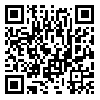BibTeX | RIS | EndNote | Medlars | ProCite | Reference Manager | RefWorks
Send citation to:
URL: http://nmj.goums.ac.ir/article-1-851-en.html
Background: Sex education is one of the challenging areas of educational systems that has always been accompanied by many problems due to some obstacles and constraints. This has led to occurrence of many behavioral problems and deviations. The aim of this study was to determine the sex education gaps in university curriculum from the students' perspective.
Methods: This was a descriptive-survey on students of universities in Kashan (15235 students), during academic year 2013-14. Overall, 220 students were enrolled in this study using stratified random sampling. Data collection tool was a questionnaire of sex education with 28 questions and six components (objectives, content, procedures, experiences and learning opportunities, cultural and advisory institutions’ performance and university atmosphere) using a 5-point Likert scale. The content validity was confirmed by experts. The reliability was estimated as 0.89 using Cronbach's alpha coefficient. Descriptive and inferential statistics were used to analyze the obtained data.
Results: The mean level of sex education gaps (3.97±0.56) in the university curriculum was above the average (3). The highest mean was related to the component of procedures (4.1±0.63) and experiences and learning opportunities (4.1±1.01).
Conclusion: The results showed that the average level of gaps in sex education in the university curriculum is higher than the assumed mean level. The gaps are present in all components of objectives, content, procedures, experiences and learning opportunities, cultural and advisory institutions’ performance and the university atmosphere.
| Rights and permissions | |
 |
This work is licensed under a Creative Commons Attribution-NonCommercial 4.0 International License. |





